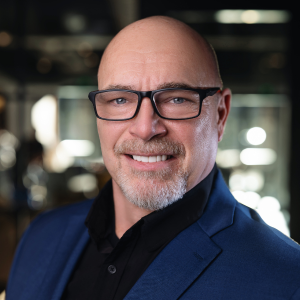How Technology Improves Transitions from Acute to Post-Hospital Care
Patient transitions from acute to post-hospital care are full of challenges. Conveying information and records, ensuring that senior care communities receive all updates, and keeping medication changes up-to-date are just a few of the potential issues that occur when patients transition into post-hospital care. Patients are also particularly vulnerable during this period, so ensuring that all caregivers receive correct information is key in helping to prevent hospital readmission.
In an attempt to facilitate that communication and comprehensive care approach, the Atlantic Health System (AHS), a non-profit health care network in New Jersey, recently implemented the AHS Post-Acute Care Collaboration Strategy program. The program is an impressive example of how technology can improve those transitions and promote positive care outcomes.
How the AHS Post-Acute Care Collaboration Strategy Program Works

Dr. Lissy Hu is President of Connected Networks at WellSky
The program is a collaboration between AHS hospitals, physicians, ancillary providers, and post-acute care facilities in New Jersey, and was established with the goal of improving outcomes during patient care transitions. The program uses platforms like CarePort Insight and CarePort Connect to use real-time metrics to compare post-acute performance based on risk-adjusted measures, identify gaps in care and opportunities for improved care, receive clinical updates and alerts to identify the appropriate level of patient care, and more.
The program’s results so far include improved patient care outcomes and financial savings. In Quarter 3 of 2023, the Atlantic ACO skilled nursing facility unit’s cost fell by 3.1% compared to its costs in Quarter 2. Additionally, the unit cost dropped by 8.7% compared to Quarter 3 in 2022, and skilled nursing facility readmission was reduced. The network overall saved more than $815,000 in 2023.
The Increasing Importance of Technology In Delivering Quality Care
The AHS program is a prime example of the impact technology can have on quality of care. Dr. Lissy Hu is president of Connected Networks at WellSky, which powers CarePort Insight and CarePort Connect. She notes that several key factors make technology increasingly important in care delivery. “The demand for post-acute care continues to go up and up,” she says. “It’s to be expected given the changing demographics of the US and the aging of Baby Boomers, and you have more demand for some types of aftercare.”
This increased demand is coupled with workforce challenges throughout the healthcare industry, but particularly on the acute and post-acute care sides. “When we look at our own data, we see that 64% of nursing homes are using contract nurse staff,” says Hu.
Technology can help the healthcare industry with these challenges, connecting providers together and making for more efficient and effective operations. Hu notes that with technology, providers can share data and make efficient decisions about the best facilities for patients, communicating electronically without the need to pick up the phone.
How Technology Can Help Bridge Gaps
Technology can help bridge gaps for better quality care and patient outcomes. When patients undergo many transitions, from transferring to different providers to undergoing medication changes, technology can ensure that every step is updated in the care plan. Such detailed records mean that the third provider who sees the patient has all of the updated information, and that no context was lost during those transitions. As a result, the provider can better care for that patient.
While technology enables interoperability and serves as a communication mechanism, it goes further. “It’s not just about interoperability, but beyond,” explains Hu. “How do we start to pull this together? The best physicians can synthesize information about the patient from multiple settings of care. They see what happened in a hospital or nursing home and can offer some analysis about what that means for the patient and the care plan going forward. They can use that to determine the best provider for a patient.”
Technology can take all of that data and start to better understand different factors, like admission risk. Hu notes that certain factors indicate a patient is at a high risk of readmission, like they had a long hospital stay, was very sick while in the hospital, or if they had difficulty swallowing in skilled nursing. “You’d want to combine that information to have a real understanding of how worried you should be about the patient returning to the hospital,” says Hu. “We’re able to put that data together and create comprehensive, wholistic information to inform these care decisions that providers are making for patients who might have seen five different providers before they got to them.”
This information can also help identify appropriate matches between providers and patients, based on the patient’s past history and specific needs. “We have more of precision medicine for a particular patient, given these analytics,” Hu explains.
While this information sharing has tremendous benefits for a patient, it also supports healthcare professionals. “All of these things are in the service of patient care and outcomes, but the more of this intelligence and enablement you can give your workforce, the more efficient they’ll be and the more they’re able to practice at the top of their license,” says Hu.
The Future of Technology in Healthcare
While technology can help improve patient outcomes and support staff, there are still some challenges in its implementation. “Technology has to be integrated into all of your other systems,” Hu explains. “We’re making sure that we’re not just thinking about analytics as a standalone solution that you’re going outside of your workflow [to use], but how do we push analytics and insights directly into some workflow tools so they’re front and center for a caregiver as they’re caring for a patient.”
It’s important to make technology simple and easy for caregivers to use. “How do we incorporate this into workflows and daily practice so that it’s not an extra step or outside of what they’d normally do?” poses Hu.
Hu predicts that AI will increasingly augment the work that healthcare providers do by removing the mundane, repetitive, and administrative tasks that are part of caregiving. Eventually, we will be able to leverage AI to help with clinical decision making, allowing for more precise care for each individual patient.
While it may be a while before AI is fully implemented in healthcare, programs like the AHS Post-Acute Care Collaboration Strategy Program are already proving the value of technology in enhancing patient outcomes. From saving money to reducing re-hospitalization rates, this program has effectively used technology to improve the quality of care.

Paige Cerulli is a contributing writer to i Advance Senior Care.
Related Articles
Topics: Facility management , Featured Articles , General Technology , Information Technology , Operations , Risk Management











